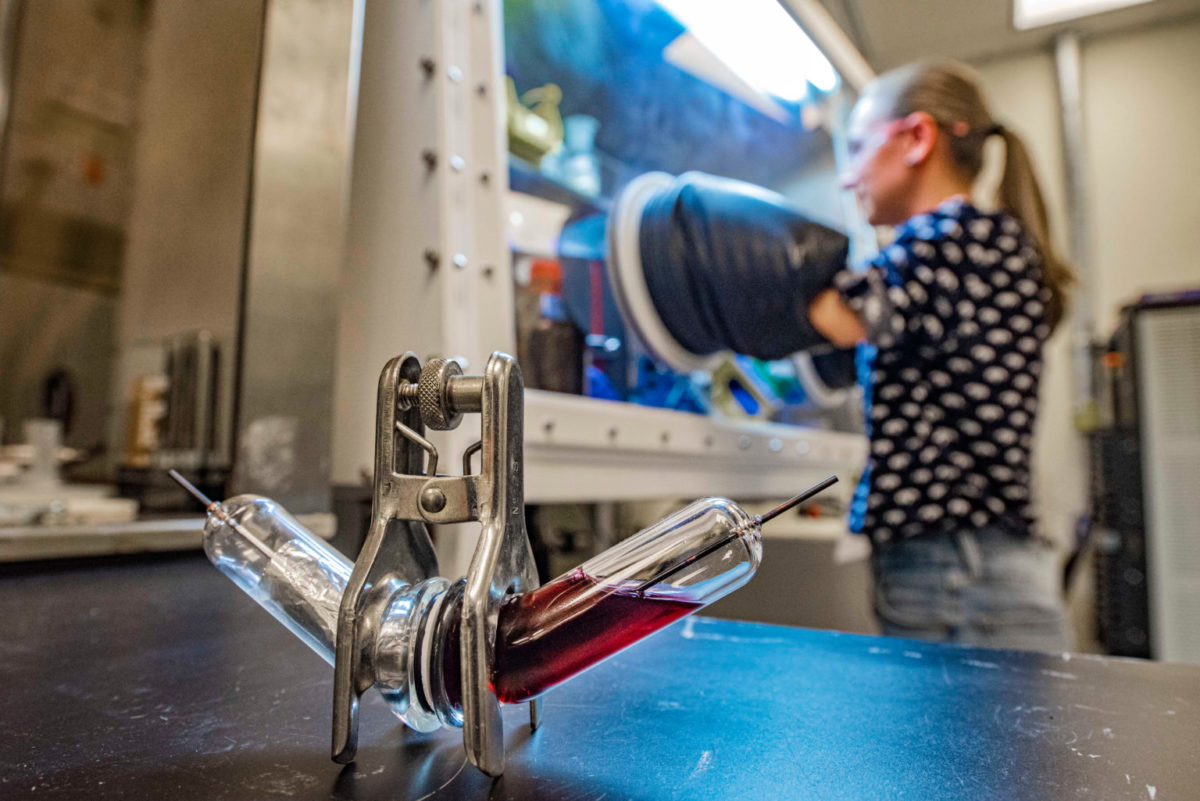From pv magazine International
Researchers at the U.S. Department of Energy’s Sandia National Laboratories have designed a new class of molten sodium batteries for grid-scale energy storage.
Molten sodium batteries store energy from renewable sources. However, commercially available versions, called sodium-sulfur batteries, typically operate at 520-660 degrees Fahrenheit. Sandia’s new molten sodium-iodide battery operates at 230 degrees Fahrenheit instead.
Researchers said that “a whole cascading cost savings” comes along with lowering the battery temperature. For example, less expensive materials may be used, the batteries need less insulation, and the wiring that connects the batteries can be thinner.
But battery chemistry that works at 550 degrees doesn’t work at 230 degrees. Among the innovations that allowed this lower operating temperature was development of a catholyte, a liquid mixture of two salts; in this case, sodium iodide and gallium chloride.
How it works
A basic lead-acid battery, commonly used as a car ignition battery, has a lead plate and a lead dioxide plate with a sulfuric acid electrolyte in the middle. As energy is discharged from the battery, the lead plate reacts with sulfuric acid to form lead sulfate and electrons. These electrons start the car and return to the other side of the battery, where the lead dioxide plate uses the electrons and sulfuric acid to form lead sulfate and water.
For the new molten sodium battery, the lead plate is replaced by liquid sodium metal, and the lead dioxide plate is replaced by a liquid mixture of sodium iodide and a small amount of gallium chloride.
When energy is discharged from the new battery, the sodium metal produces sodium ions and electrons. On the other side, the electrons turn iodine into iodide ions. The sodium ions move across a separator to the other side where they react with the iodide ions to form molten sodium iodide salt.
Instead of a sulfuric acid electrolyte, the middle of the battery is a special ceramic separator that allows only sodium ions to move from side to side.
Unlike a lithium ion battery, everything is liquid on the two sides, the researchers said. That eliminates issues like the material undergoing complex phase changes or falling apart. And that means the liquid-based batteries don’t have as limited a lifetime as many other batteries.
Energy density
Additionally, at 3.6V, the new sodium-iodide battery has a 40% higher operating voltage than a commercial molten sodium battery, the researchers said. This voltage leads to higher energy density, meaning that potential future batteries made with this chemistry would need fewer cells, fewer connections between cells, and an overall lower unit cost to store the same amount of electricity.
The next step for the sodium-iodide battery project is to continue to tune and refine the catholyte chemistry to replace the gallium chloride component, Small said. Gallium chloride is expensive, more than 100 times as expensive as table salt.
The team is also working on engineering tweaks to get the battery to charge and discharge faster and more fully. One previously identified modification to speed up the battery charging was to coat the molten sodium side of the ceramic separator with a thin layer of tin.
The researchers said it would likely take five to 10 years to get sodium-iodide batteries to market, with most of the remaining challenges being commercialization challenges, rather than technical challenges.
The development of the new sodium battery was supported by the Department of Energy’s Office of Electricity Energy Storage Program.
This content is protected by copyright and may not be reused. If you want to cooperate with us and would like to reuse some of our content, please contact: editors@pv-magazine.com.









By submitting this form you agree to pv magazine using your data for the purposes of publishing your comment.
Your personal data will only be disclosed or otherwise transmitted to third parties for the purposes of spam filtering or if this is necessary for technical maintenance of the website. Any other transfer to third parties will not take place unless this is justified on the basis of applicable data protection regulations or if pv magazine is legally obliged to do so.
You may revoke this consent at any time with effect for the future, in which case your personal data will be deleted immediately. Otherwise, your data will be deleted if pv magazine has processed your request or the purpose of data storage is fulfilled.
Further information on data privacy can be found in our Data Protection Policy.